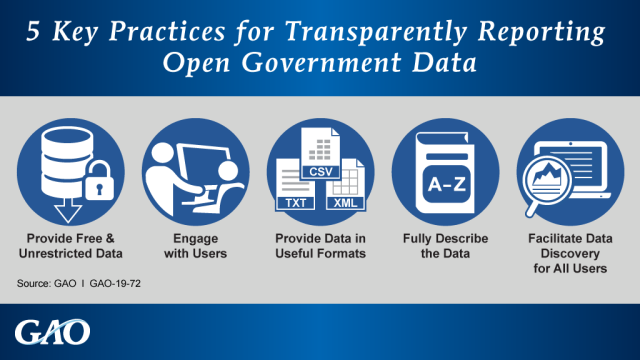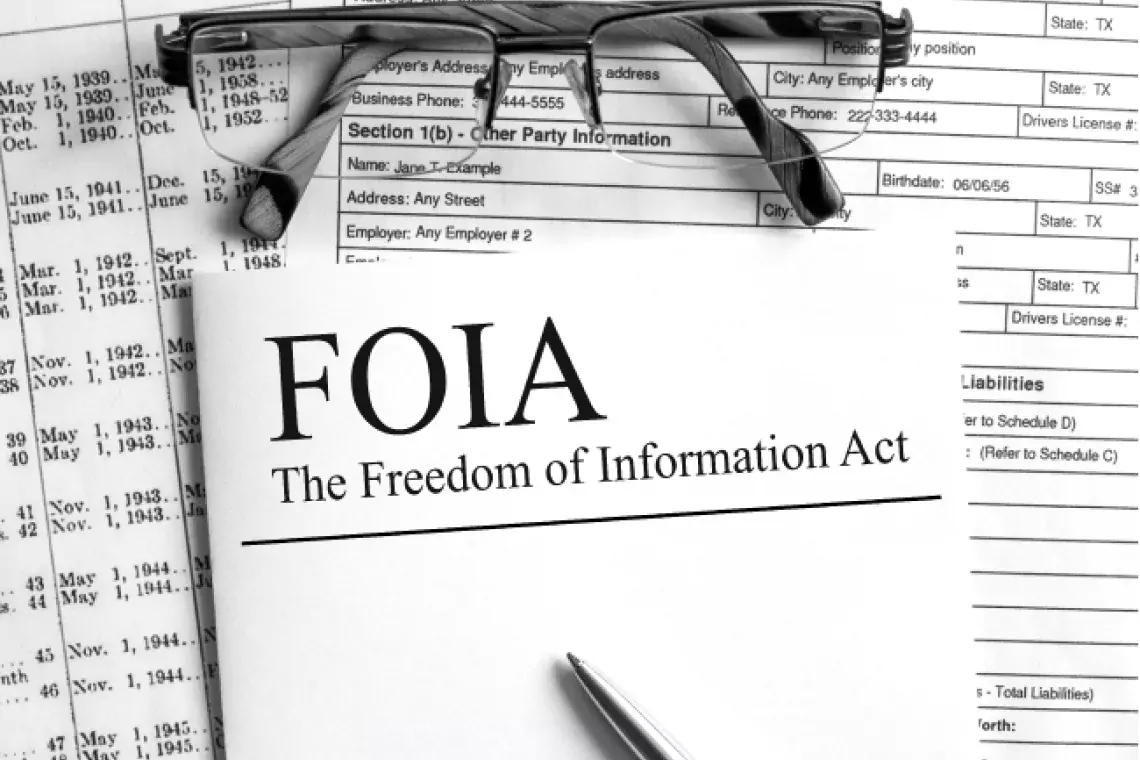A Lot of Government Information Is Freely Available
From health and education statistics to budget and spending information, the federal government produces a lot of information, or data. Agencies are making more and more of this data open for everyone to use. Our recent report identified 5 key practices that can help the government’s open data reach a wide range of users. Today’s WatchBlog explores these key practices.
What is open government data?
Open government data is government-produced information that anyone can freely use, modify, and share for any purpose. For example, the Treasury Department publishes open data on its new USAspending.gov website, which provides detailed information to help track government spending.
Open data can foster accountability and public trust by giving citizens information about government activities and results. It can also promote private sector innovation and help industries generate revenue, such as by providing demographic, financial, or geographic information. For example, some real estate websites use Census data to provide information on the neighborhoods where homes for sale are located.
How can agencies make their data more useful?
For open government data to be most useful, it needs to be presented effectively. We found that managers of open government data programs can consider 5 key practices to ensure that their data is as transparent as possible.
For example, the government can engage with users by asking them for feedback and using it to make changes to the website. We found that the Treasury Department has a variety of ways for users to provide feedback on USAspending.gov, including an online community forum and in-person interviews.
In addition, to facilitate data discovery for all users, open data managers can make sure the website is easy to navigate; provide data visualizations, such as charts, graphs, or maps; and allow users to easily search the data; among other things. We found that USAspending.gov makes the data easy to discover by offering a variety of ways to explore, search, download, and understand the information. For example, users can generate maps based on their search results showing the amount of federal spending by state, county, or congressional district.
However, Treasury could help the website better address our key practices and other requirements. For example, the website doesn’t fully meet legal search requirements because users cannot search the data by city or by certain accounting codes. We recommended that Treasury better align USAspending.gov with these search requirements, among other things.
To learn more about key practices for making open government data websites like USAspending.gov more transparent, check out our full report.
- Comments on GAO’s WatchBlog? Contact blog@gao.gov.
GAO Contacts
Related Products

GAO's mission is to provide Congress with fact-based, nonpartisan information that can help improve federal government performance and ensure accountability for the benefit of the American people. GAO launched its WatchBlog in January, 2014, as part of its continuing effort to reach its audiences—Congress and the American people—where they are currently looking for information.
The blog format allows GAO to provide a little more context about its work than it can offer on its other social media platforms. Posts will tie GAO work to current events and the news; show how GAO’s work is affecting agencies or legislation; highlight reports, testimonies, and issue areas where GAO does work; and provide information about GAO itself, among other things.
Please send any feedback on GAO's WatchBlog to blog@gao.gov.







